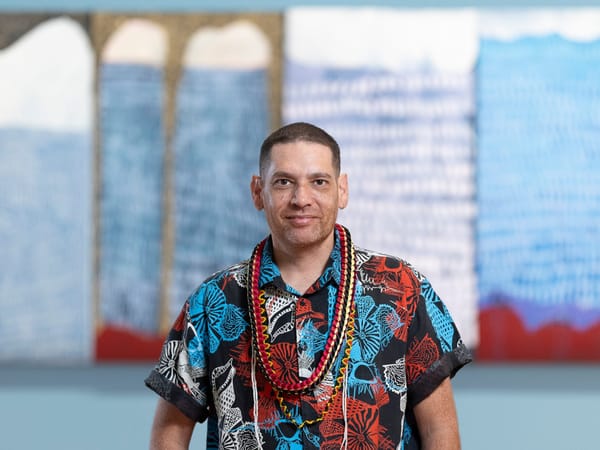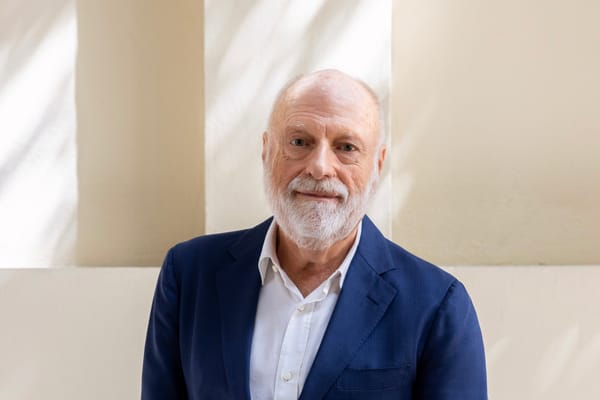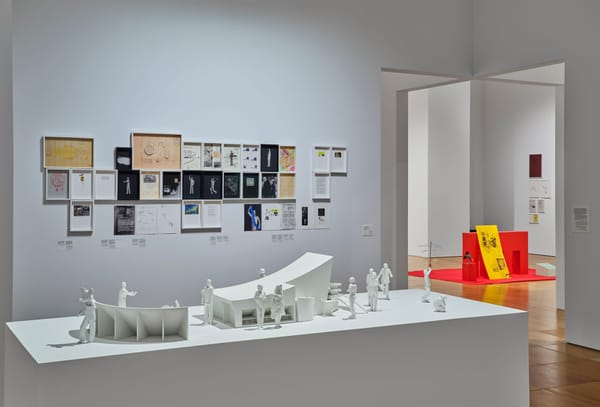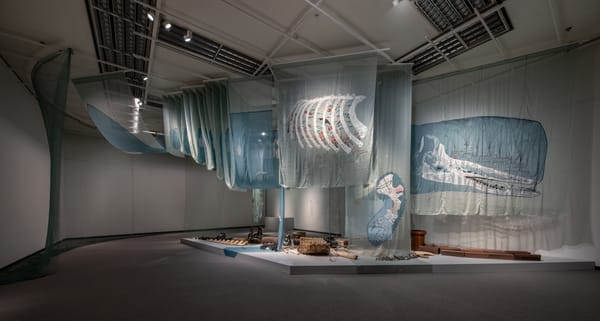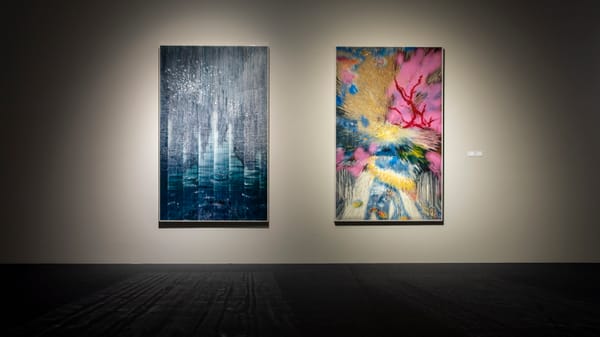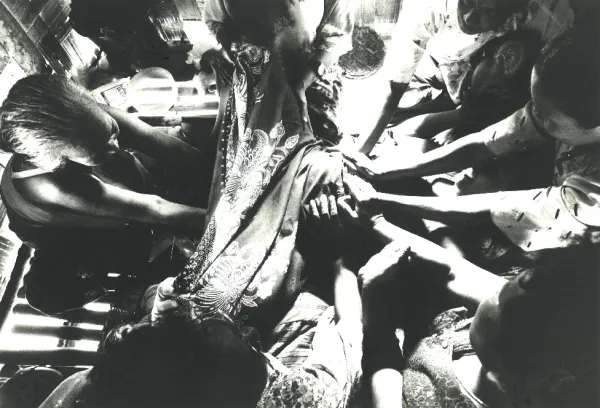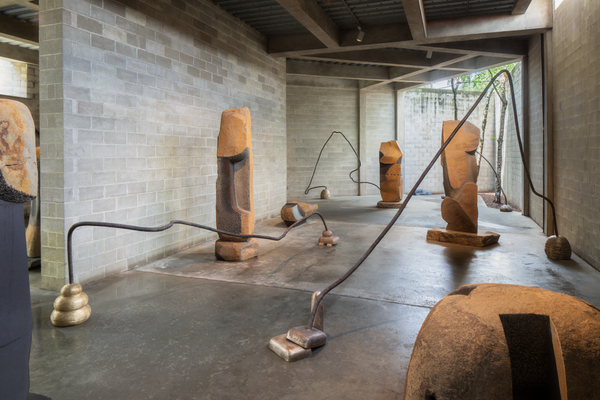Shows
Eda Şarman’s “Shallow Shore, Deep Well”
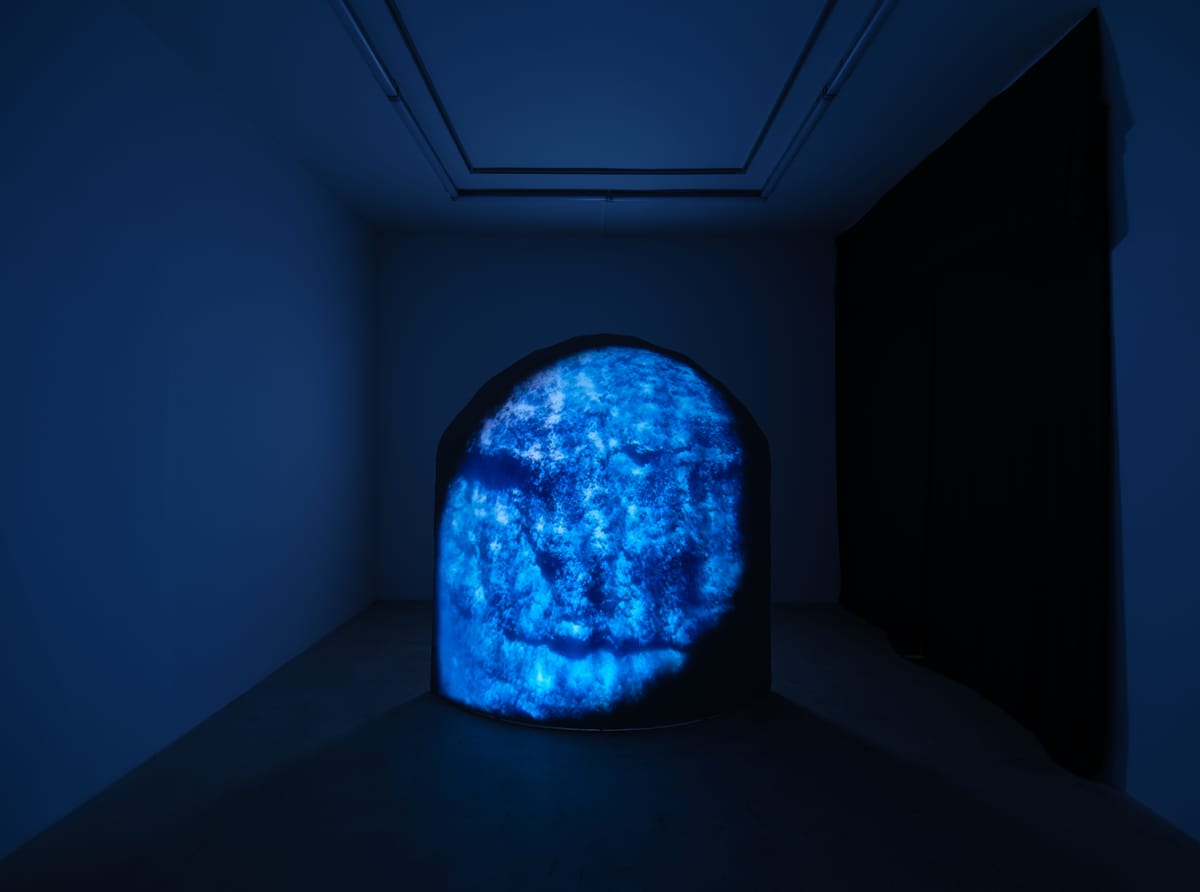
Eda Şarman
Shallow Shore, Deep Well
Ferda Art Platform
Istanbul
May 8–Jun 21, 2025
The phenomenon of water, elusive and ever-intriguing, saturates the mind of early-career Turkish artist Eda Şarman. Her latest solo exhibition, “Shallow Shore, Deep Well,” marks a pinnacle in her fast-broadening oeuvre and continues a recent cycle of shows that investigated the role of water in daily life.
Şarman’s practice basks in the seductive glimmer of the material she explores, and could risk being mistaken as a mere beautification of water and nature, albeit with a redeeming, surrealistic flair. In reality, rather than offering an aesthetic spectacle, her work critiques metropolitan resource management and the blind sides of the scientific worldview with respect to water. This was evident in her latest projects, such as “Fountain Creature” (2024) at Istanbul’s Barın Han art center, which focused on urban hydro-infrastructure as a noxious system that nonetheless sustains, if dissonantly or grotesquely, the life-giving medium.
“Shallow Shore, Deep Well” at Ferda Art Platform was one of the artist’s most sophisticated shows, owing to the gallery’s high-end production capabilities. The exhibition took place within an elegant, historical apartment, setting it apart from standard white-cube installations. Though Şarman’s previous presentations leaned toward amateurish at times, this show was more refined, comprising 17 new works that ranged from painting to sculpture, photography, video, and ceramics in well-placed, thematic contiguities.
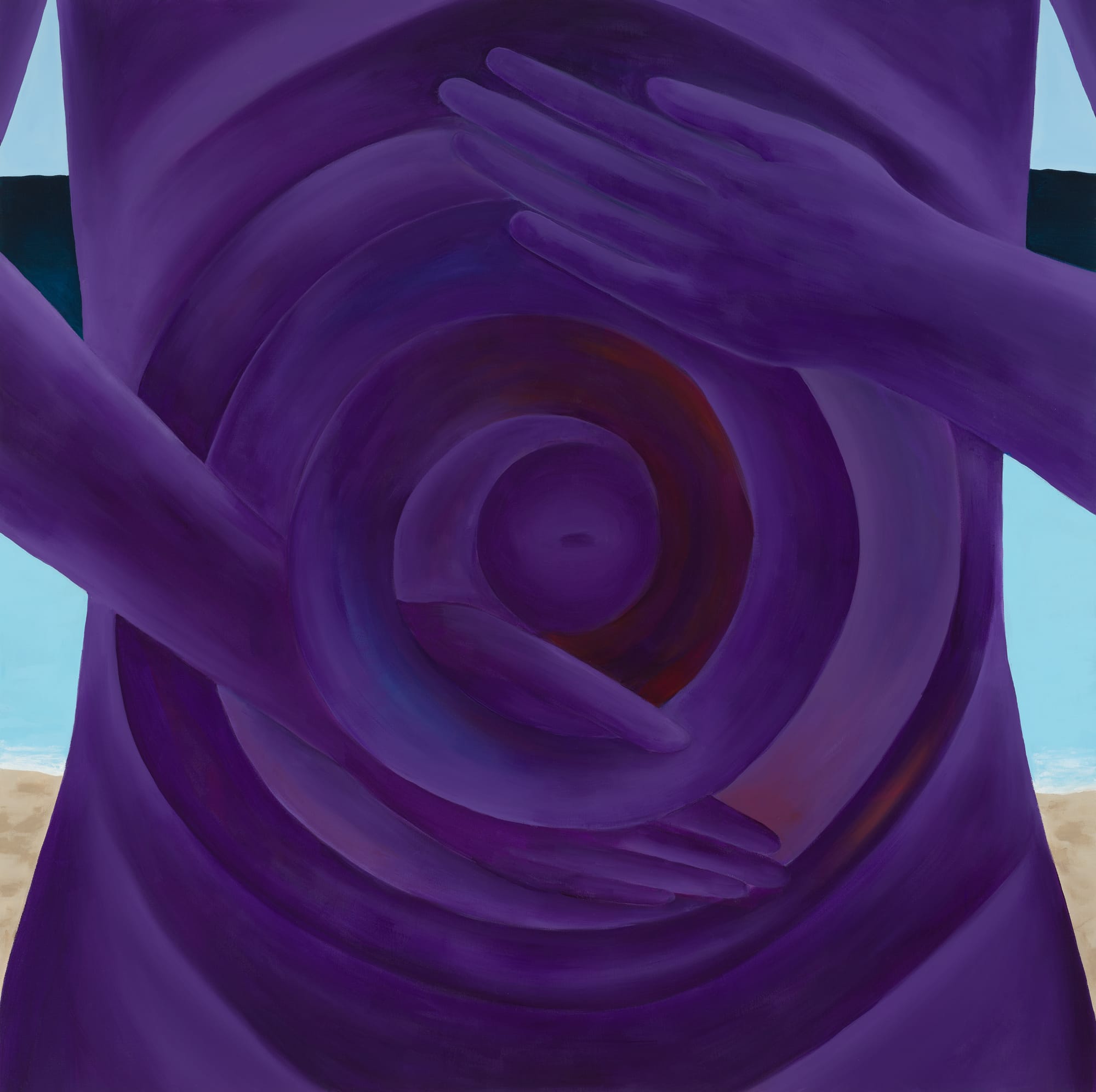
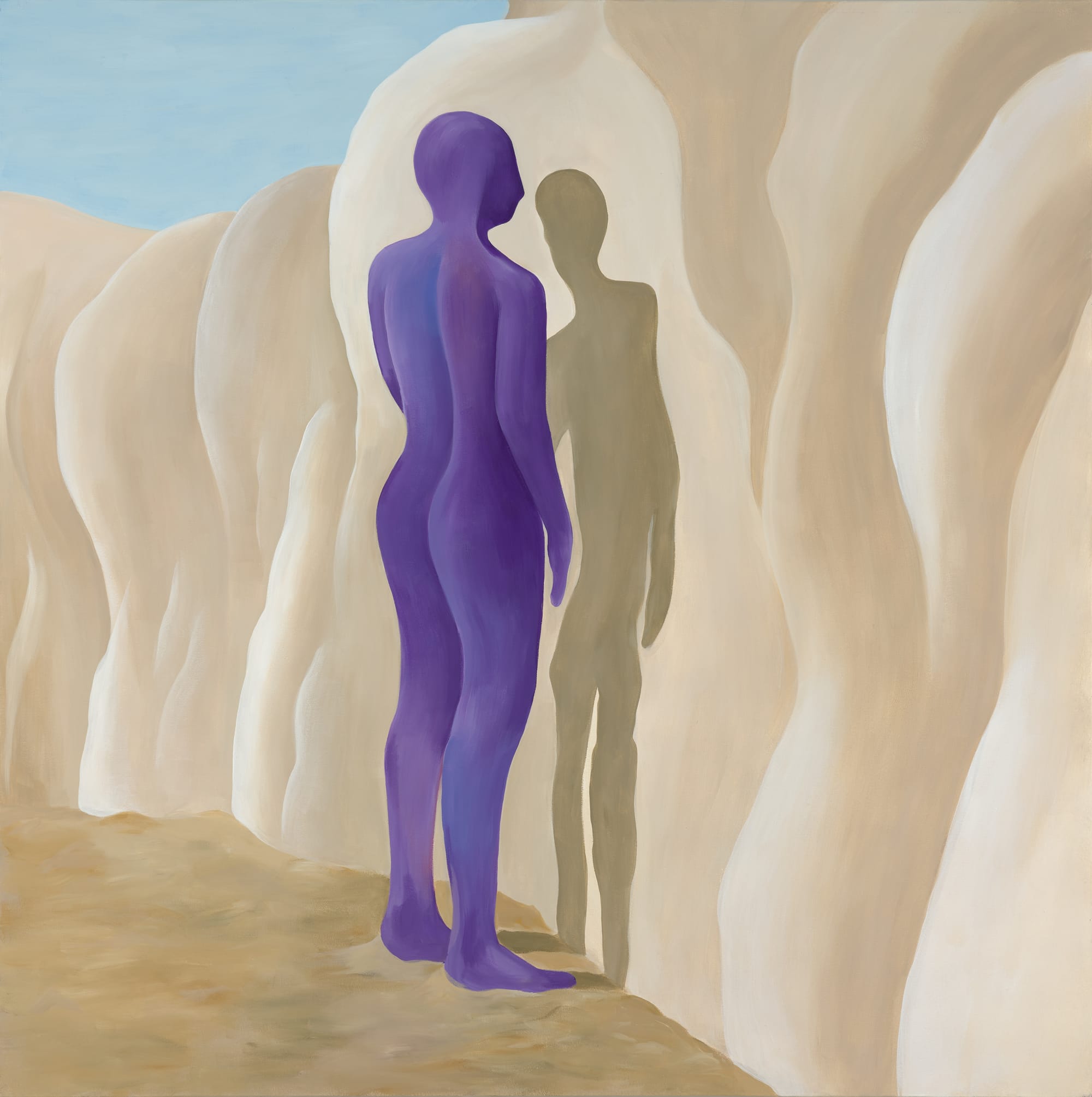
EDA ŞARMAN, Ashore, 2025, acrylic on canvas, 120 x 120 cm (left); and Shadow Mirror, 2025, acrylic on canvas, 120 x 120 cm (right). Photos by Barış Özçetin. Courtesy Ferda Art Platform, Istanbul.
In the corridor of a salon, each wall of the entranceway was festooned with an acrylic-on-canvas. Ashore (2025) features a purple whorl of concentric circles over the core of a human figure, overlain with gently caressing hands. On the opposite wall hung Shadow Mirror (2025), depicting another purple individual, this time from head to toe, facing a coastal cliff in which their shadow—slighter and colorless—intimately embodies a spirit of otherness. Conspicuously sparse in aquatic motifs, these works invited viewers into the subjective, emotional worlds that unravel from within the artist’s renderings of human contact with the sea.
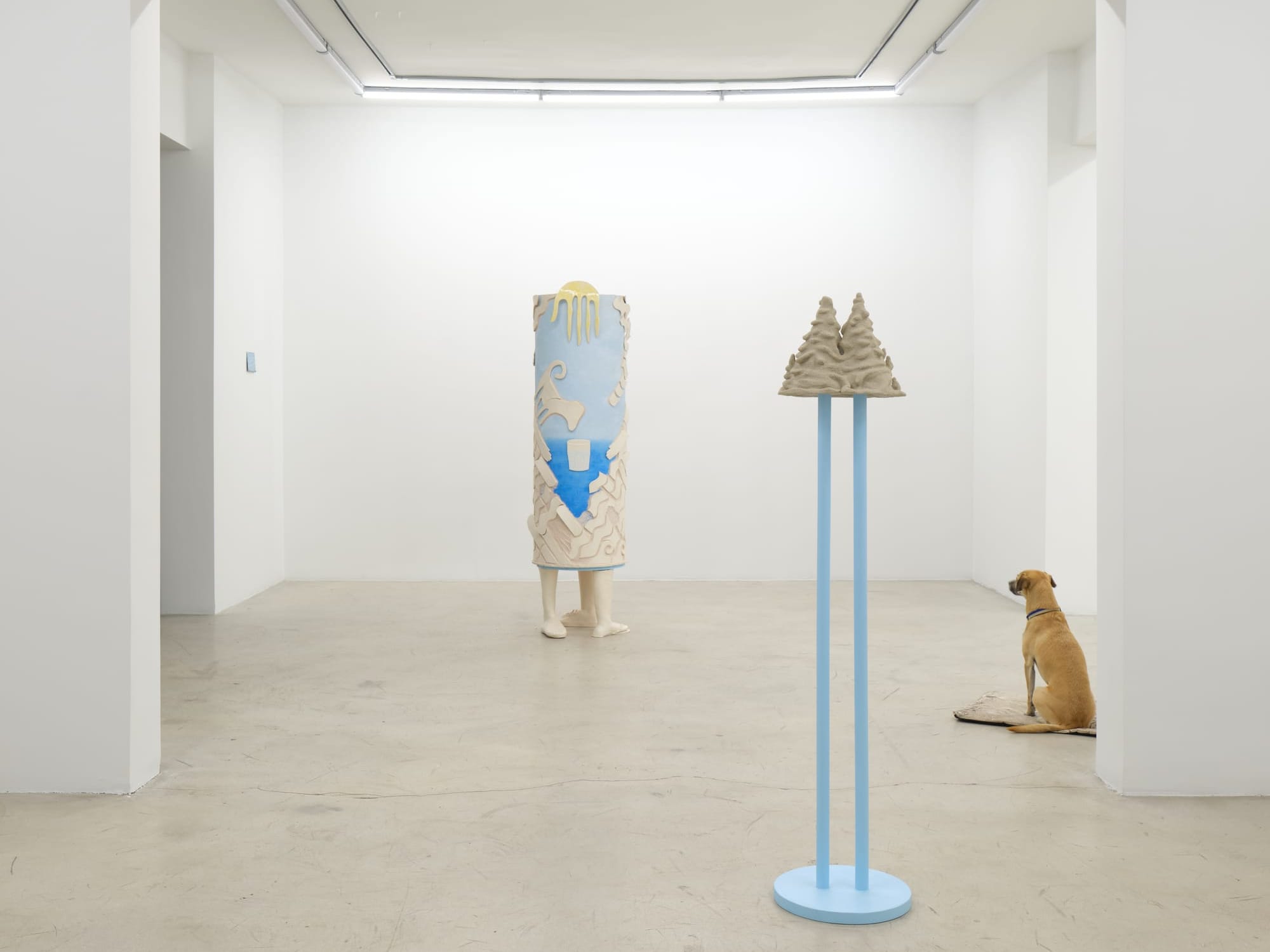
The dry, prickly beaches of Gökçeada in the northern Aegean Sea is a rich source of inspiration for Şarman, as is palpable in her sand and ceramic sculpture, Watery Castle (2025), which recalls the geological formations on the island. In the posterior room, the exhibition’s centerpiece, 3 Steps (2025), is a ceramic column propped up by three sculpted human legs. The work features personal symbology, such as finger-like rays of sunlight brushing against the beige-colored silhouette of Şarman’s dog Kara (which means “land” in Turkish), and sandy shores transforming into outstretched hands that frame the azure seascape in the background. While somewhat naive in tone, the merging of art with nature in this piece is consummated through the unselfconscious innocence of Şarman’s touch.
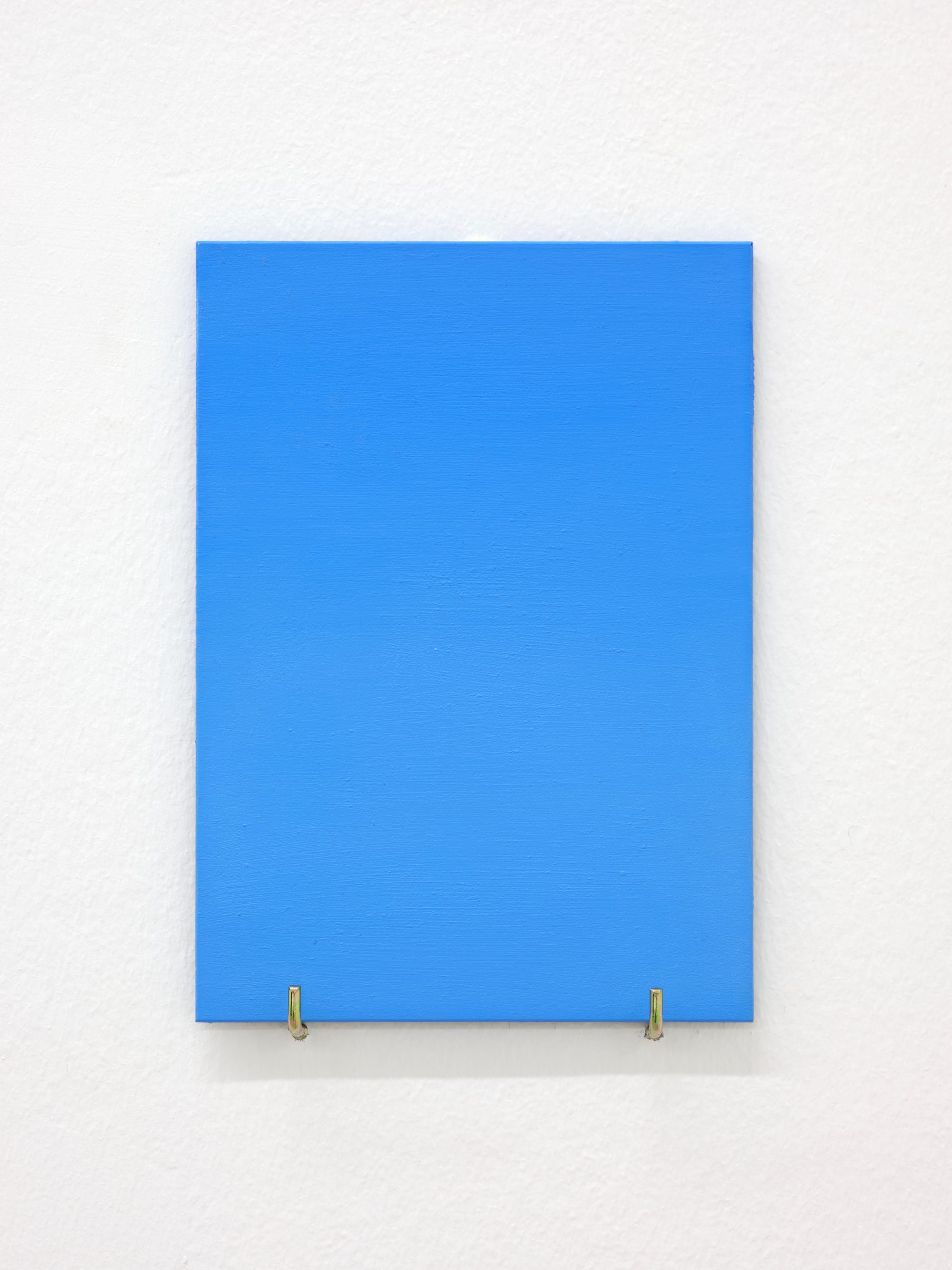
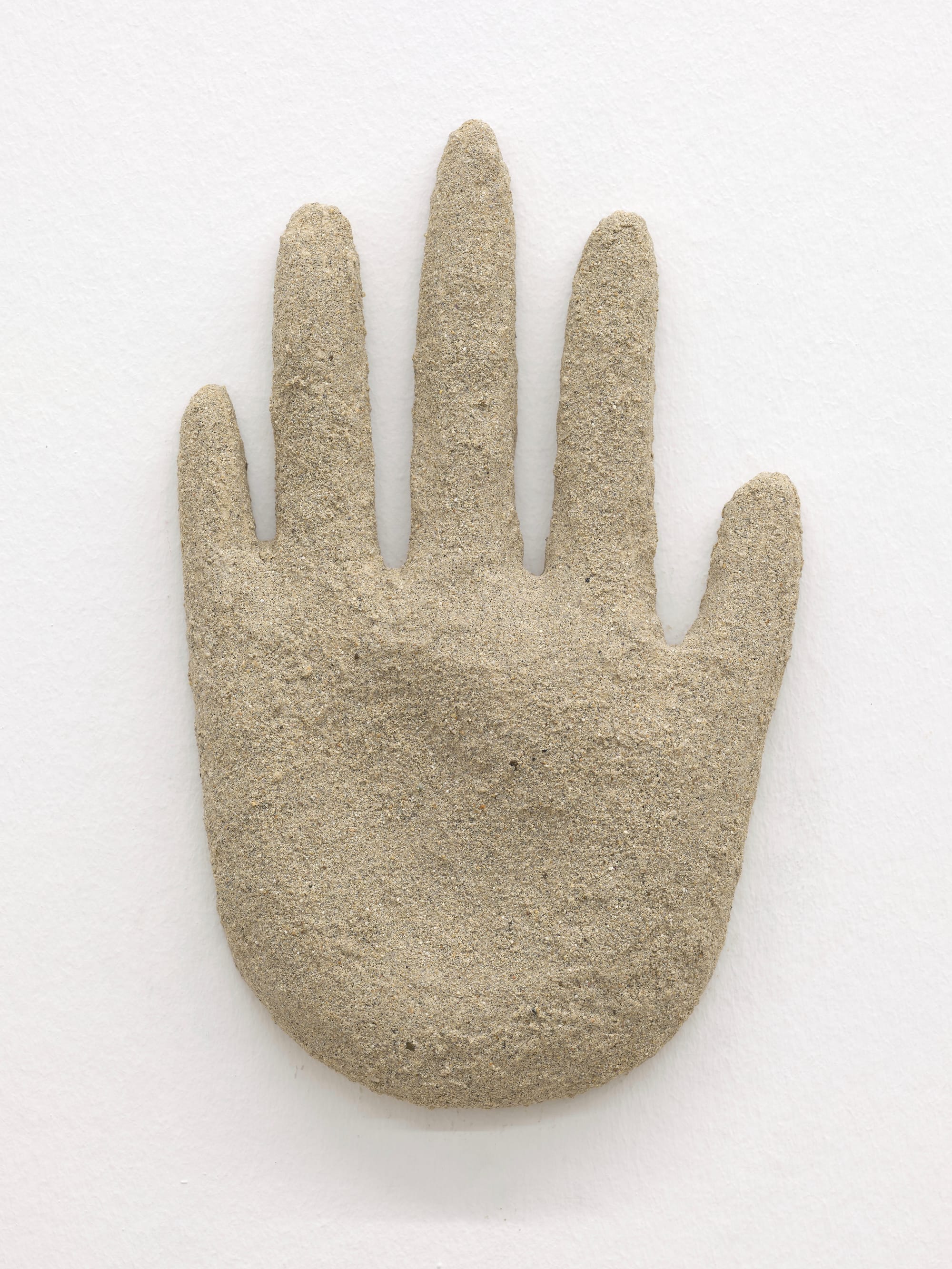
EDA ŞARMAN, A Beautiful day or a glass of water, 2025, oil on wood panel, 10 x 16 cm (left); and Feeling water, 2025, ceramic, sound vibration, 16 x 25 cm (right). Photos by Barış Özçetin. Courtesy Ferda Art Platform, Istanbul.
Still in the early stages of her career, Şarman is keeping her moves in the contemporary art world as light as the aquamarine hue of her oil-on-wood panel, A Beautiful day or a glass of water (2025), one of the many small-form paintings in the show that offered shimmering insights into the artist’s ecological imagination. Elsewhere, the gnarled, human-like visage in her video work Head stone (2025) recurs as a sunken mineral being. The scintillating, mostly underwater moving images are projected onto a concave structure reminiscent of a shoal, and affectively linked with Feeling Water (2025), an open ceramic hand that visitors could press their palms onto, which, in turn, induced a vibration that intermingled with the surrounding audio of aqueous swishing and trickling.
The evocations of ”Shallow Shore, Deep Well” were otherworldly in a sense of the truly earthly. Like water, the show recalled primeval sources and places rich with natural phenomena that life in industrial civilization often loses touch with. And while Şarman appeared to float on the surface of deeper questions, it was no less enlivening to go along for the shallow dive.
Matt A. Hanson is an art writer based in Istanbul and ArtAsiaPacific’s Istanbul desk editor.
